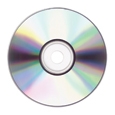Students often ask for advice when making CDs. The questions may range from what literature to record, what order to place the selections on the CD, where to get permission to record a piece, where to record the project, how to find a recording engineer, where to put the microphones and stand in relationship to the piano, how to choose the best takes, and how much reverberation to add etc. However, no one ever asks about what goes around the CD on the cover. I had never thought much about CD covers until I began reviewing recordings on a regular basis.
The CD covers that I have reviewed over the past few years lead me to believe that musicians are perfectionists when it comes to what is on the recording, but do not pay as much attention to what they put around the CD. If the information is not thorough, easy to read (font and color), and placed in a logical order, it is less appealing and may not attract the attention they want. Marketing and how to present oneself are important parts of a musician’s professional life. So, when a student asks the usual questions about making a CD, here are some other topics to discuss.
Purpose of Cover
The purpose of a cover is to sell the product, tell the performer’s story, and to protect the CD. There are graphic designers who specialize in designing CD/DVD covers and print material for arts organizations. Hiring a graphic designer may be as important to the project as hiring a recording engineer. Unfortunately many performers try to do the graphic design themselves, and this is where problems arise.
A graphic designer will offer advice on how to make the jacket stand out in a display of many other CDs. The cover art and other materials should be attractive and the print information should have a legible, logical format.
To protect a CD, a recording artist may choose between a plastic case and a cardboard wrap. In the past most performers have chosen the plastic cases; however, lately there is an increase in the use of cardboard wraps. In addition to environmental concerns, a cardboard wrap tends to survive the postal system better than the plastic cases. Most of the plastic cases that are mailed arrive cracked in some way, usually at the point of the hinge.
If a plastic case is chosen, the CD cover will need a front cover design, spine, and back cover design and perhaps a booklet that is inserted in the front cover. With the choice of the cardboard wrap, there are three or more sides to tell a story.
What Goes Where
 The performer (if working without a graphic designer) should start this project by assembling a grouping of favorite CDs that seem appealing and attractive. Look over each one for a common thread in their design. The best are simple and direct. Then the performer should make a list of the positive and negatives of each CD cover and compare the results.
The performer (if working without a graphic designer) should start this project by assembling a grouping of favorite CDs that seem appealing and attractive. Look over each one for a common thread in their design. The best are simple and direct. Then the performer should make a list of the positive and negatives of each CD cover and compare the results.
The cover should have the name of the album printed in a large font, followed by the performer’s names and instruments. This is followed by either the names of the main composers on the album or if there are two composers or less, the name of the compositions may be included. A font and a text color should be selected that are easily read against the background color.
The spine will repeat this information in a smaller font and should also include the record company’s or distributing agent’s product number. Suggestions for the back cover include the album name and a list of the compositions on the CD. This list should have the composers’ names, dates, movement titles, and duration of each movement. Also included on the back cover are the copyright date, photo credits, bar code, and contact information. Once again, the performer should choose print colors that are easily read and a font that is large enough to be viewed without a magnifying glass. Many artists include the statement, “All rights reserved, unauthorized duplication is a violation of applicable laws.”
There is more freedom in what the performer includes on the inside of the cover or in the booklet. However, the best results will be obtained if it is kept simple. The two main features of these pages are the program notes for each composition on the recording and biographical information of the performers and perhaps the composer. If the CD features a chamber ensemble, a short history of the group might be included. Other suggestions that add interest are photos that bring the performer’s story to life, names of fellow performers, an album dedication, names of recording engineers, types of recording equipment, place and date of recording, and other acknowledgments.
Once the information has been collected, the performer should arrange the information in a logical order. After assembling several different layouts, ask friends and colleagues for comments and suggestions. (The CD cover in the picture, follows the motto keep it simple. Claudio Barile has chosen a picture of himself, dressed in concert attire, holding a flute with a background of a concert hall. The brief seven-word text includes his name, title of album (Plays Sonatas), and the list of composers on the album. The font sizes are large and the color scheme is easy to read.)
Program Notes
Writing program notes is an art. If writing is not a strong point, hire someone who specializes in this field. Many orchestral program note annotators free-lance by writing program notes for performers. Well-written program notes include a short biography of the composer, information about the genre and style of the composition, historical information about the piece such as when and where the first performance was, who played the premier performance, and a short analysis of each movement. The program notes might also include what influenced the composer to write the piece or if the composition is a commission, who commissioned the work and why. If a new composition is being premiered, the performer should consider asking the composer to write the program notes for his composition.
Many artists sell albums around the world. If there is space in the booklet, consider printing the program notes in two or more languages. Of course you should be sure to have a native speaker check the translation.
Cover Art
Cover art is the background material for the front and back pages of the album. This might be a painting, a photo, or a graphic design. The most importing thing to remember is the cover art should tell the performer’s story and sell the CD. Of the recordings that I receive for review, approximately 80% have cover art that does nothing to enhance the CD. I look at the art and wonder what the connection is between the art and the recorded music. While much of the cover art is beautiful, it does little to sell the product. This is an area where a graphic designer can be of the greatest help.
Colors that Pop
The choice of colors for the CD can enhance the appeal and determine whether people can (or will) read the type. A consumer may spend just a moment glancing at your CD. If they cannot read the type or the image does not catch their eye, they will walk away. Color theorists have studied this medium for years and their research is available on the web and at the public library. Again, if you design your own art, ask for unbiased opinions from people you respect. It is easy to become enraptured with a vision that makes sense to you but nobody else. If you are using a graphic designer, however, do not be afraid to offer your opinions. After all the final product represents your artistic image.
The Finished Product
Making a CD is a large financial commitment, so be sure to make the most of the opportunity. Unfortunately, graphic design is a topic that teachers and performers do not study in music school, but one that is important for career development. Many of the ideas that are relevant for CD design also affect other aspects of marketing oneself as a performer. In everything from resumes and business cards to websites, it is important to consider the effect of the visual presentation.






